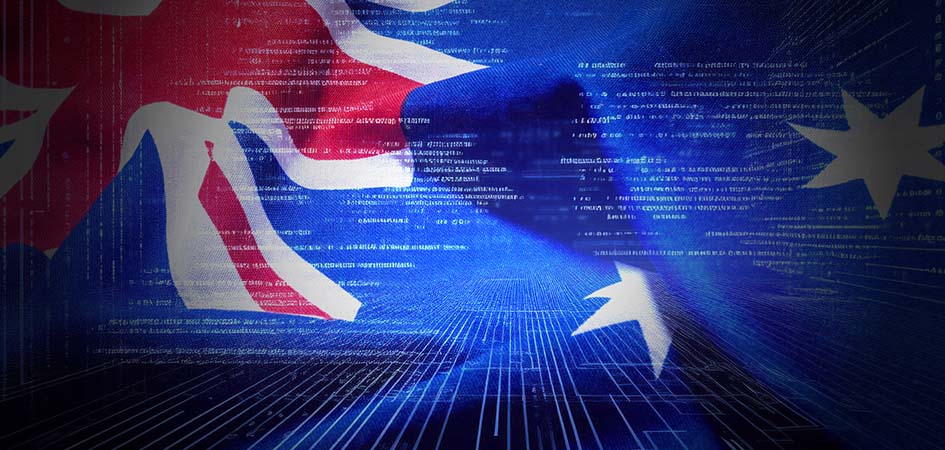Cybersecurity Threat Briefing for Organizations Under the SOCI in Australia

Trustwave Research Reveals Cybersecurity Risks Threatening Patient Lives in Healthcare. Learn More
Get access to immediate incident response assistance.
Get access to immediate incident response assistance.
Trustwave Research Reveals Cybersecurity Risks Threatening Patient Lives in Healthcare. Learn More

The Security of Critical Infrastructure (SOCI) Act in Australia mandates that organizations operating within critical infrastructure sectors implement robust cybersecurity measures to protect against an increasingly diverse and sophisticated range of cyber threats.
These sectors, which include energy, water, communications, healthcare, transport, and other essential services, are vital to national security, public safety, and economic stability.
Organizations governed by the SOCI framework face a complex threat landscape characterized by nation-state actors and cybercriminal groups. These entities deploy a wide array of tactics, techniques, and procedures (TTPs) aimed at compromising, disrupting, and exploiting critical infrastructure.
China, represented by threat groups such as APT40 and APT41, is motivated by espionage, intellectual property theft, and economic advantage. Their tactics include spear-phishing campaigns targeting key individuals within critical infrastructure, using zero-day exploits to compromise industrial control systems, and supply chain attacks through compromised hardware and software vendors.
Russia, through groups like Sandworm and APT29, seeks to disrupt critical infrastructure, exert geopolitical influence, and gather intelligence. Their techniques involve deploying destructive malware, such as NotPetya and Industroyer, which are designed to disrupt operational technology environments. Additionally, Russia engages in advanced persistent threat (APT) campaigns targeting government agencies, energy, and transportation sectors, often using social engineering to gain access to sensitive networks.
Iran, with groups like Charming Kitten and APT33, is driven by regional influence, the disruption of adversaries, and retaliation. Their tactics include distributed denial-of-service (DDoS) attacks against financial and energy sectors, ransomware campaigns aimed at disrupting critical infrastructure operations, and exploiting vulnerabilities in remote desktop protocols (RDP) and virtual private networks (VPNs).
North Korea, particularly through the Lazarus Group, is motivated by financial gain, political influence, and destabilization. They are known for cyber heists targeting financial institutions and cryptocurrency exchanges associated with SOCI sectors, deploying malware like WannaCry to disrupt services and extort ransom, and conducting phishing campaigns to steal credentials from employees in critical infrastructure.
Ransomware-as-a-Service (RaaS) operators are primarily financially motivated. They deploy ransomware such as LockBit, Conti, and REvil to encrypt data and demand ransoms for decryption keys often employing double extortion tactics where data is exfiltrated and threatened with public release if ransoms are not paid. These operators frequently target backup systems to make recovery more challenging.
Organized crime groups are driven by financial gain through cyber fraud and data theft. Their tactics include:
Insider threats present another significant risk, with individuals motivated by sabotage, financial gain, or ideological reasons. Malicious insiders may exploit privileged access to sabotage systems or exfiltrate sensitive data, introduce malware into SOCI networks via removable media or unauthorized software, or collaborate with external threat actors to facilitate breaches.
Phishing and social engineering are commonly employed to gain initial access or escalate privileges within a network. These methods typically target key personnel with access to critical systems or sensitive information. Supply chain compromises are another prevalent tactic, with threat actors exploiting vulnerabilities in third-party vendors that provide services or products to SOCI organizations, effectively bypassing traditional security controls.
Exploring software vulnerabilities is a frequently observed technique, with attackers targeting zero-day and unpatched vulnerabilities in widely used software such as Windows, ICS software, and network management tools. Attackers use tools like Cobalt Strike to maintain persistence and facilitate lateral movement within compromised networks.
Ransomware deployment is a significant threat, with attackers leveraging vulnerabilities or phishing campaigns to deploy ransomware across an organization’s network, targeting backups and critical systems to maximize disruption. Additionally, nation-state actors have been known to deploy destructive malware, such as wipers, that erase data or disrupt critical infrastructure operations.
To mitigate these threats, organizations under the SOCI framework should enhance their incident response capabilities by regularly updating and testing incident response plans and ensuring that critical infrastructure-specific incident scenarios are included in tabletop exercises. Implementing a Zero Trust architecture is also crucial as it limits access based on the principle of least privilege and continuously monitors and validates the legitimacy of user credentials and devices.
Strengthening supply chain security is essential, requiring rigorous security assessments of all third-party vendors and implementing contractual requirements for cybersecurity standards in supplier agreements. Regular patching and vulnerability management should be prioritized, with organizations establishing a robust patch management process to ensure the timely application of security updates and the continuous monitoring for new vulnerabilities and threats relevant to SOCI sectors.
Advanced threat detection tools, including Endpoint Detection and Response (EDR) and Network Detection and Response (NDR) solutions, should be deployed to enhance the detection of sophisticated threats. Utilizing threat intelligence feeds can also help organizations stay updated on the latest tactics used by nation-state actors and cybercriminals.
Trustwave’s Managed Security Service (MSS) and Consulting and Professional Services (CPS) provide a robust, end-to-end cybersecurity solution tailored to the needs of critical infrastructure organizations. Trustwave’s MSS offers continuous monitoring, advanced threat detection, and incident response capabilities, ensuring potential threats are identified and mitigated swiftly. Meanwhile, Trustwave’s CPS delivers strategic guidance, security assessments, and hands-on support, helping organizations to design, implement, and optimize their cybersecurity defenses.
Grant Hutchons is APAC Director for Managed Security Services Engineering at Trustwave. He specializes in Managed Detection and Response and targeted Co-Managed SOC solutions, helping organizations in healthcare, education, and government sectors enhance their cybersecurity posture. Follow Grant on LinkedIn.
Trustwave is a globally recognized cybersecurity leader that reduces cyber risk and fortifies organizations against disruptive and damaging cyber threats. Our comprehensive offensive and defensive cybersecurity portfolio detects what others cannot, responds with greater speed and effectiveness, optimizes client investment, and improves security resilience. Learn more about us.
Copyright © 2025 Trustwave Holdings, Inc. All rights reserved.